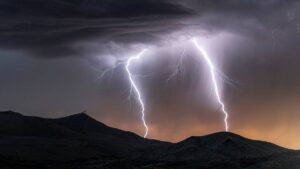How heap leach thinking could help overcome looming nickel bottlenecks

Gas, break, honk. Gas, break, honk. Honk, honk, punch. Gas, gas, gas. Pic: The Image Bank, via Getty Images.
Where will new supply come from? It’s a question asked with increasing frequency by battery metals forecasters when they look at bottleneck-ripe markets for raw materials with little solution in sight.
You’ve probably seen the charts – the ones that map current global supply against predicted demand for lithium/nickel/copper/cobalt/manganese/graphite and their battery chemistry buddies – where expected demand leaves current and forecast supply in the shadows.
The problem is not just finding these new minerals. Significant hurdles can also take the form of metallurgical extraction and upfront capital intensity that can stall momentum on projects the world needs to fill its looming gaps.
The quicksand of the development phase has claimed many victims over the years. And is a problem which may require some lateral thinking.
In battery-grade nickel, for example, investment has recently leaned towards a technique known as high pressure acid leach (HPAL) – a process which extracts premium nickel and cobalt from lower-grade nickel laterite ores.
Given your author failed Year 10 chemistry they may not be the best person to explain the intricacies of the HPAL process. But the basic knocks on it are that its complexity make it very capital intensive and prone to CAPEX blowouts, not to mention the risk of severely underdelivering in terms of nickel output.
Perhaps the highest profile global example is the Goro project in New Caledonia, which was once owned by Vale and where Tesla took a stake in 2021.
Goro’s history has been plagued by misadventure – initially in a capex bill that ballooned from US$1.5 billion to US$4.5 billion to support its HPAL processing infrastructure, and then in a nameplate capacity ramp-up which took two years longer than expected because of the technique’s complexity.
Acid leaks into nearby reefs and bays have plagued the project, now held by a group comprising Trafigura and New Caledonian business interests, in the years since.
Despite it all, Tesla’s investment in 2021 combined with the part-ownership by one of the world’s largest commodities traders in Trafigura, highlights the value of the high-quality output product to the burgeoning EV industry.
The high capital cost and technical complexity of HPAL makes it challenging to get the majority of nickel laterite projects off the ground which could impede an entire revolution.
Laterite thinking
Closer to home is Glencore’s Murrin Murrin operation, the once Twiggy-aligned fully integrated nickel-cobalt operation in Western Australia which churned out 33,700t of nickel and 2,800t of cobalt in metal in 2021.
Murrin Murrin is also a HPAL producer, though its facilities have given its challenges in terms of ramp-up and output over the years – so much so that it successfully trialled heap leaching as a processing alternative during the mid-2000s, going as far as completing a feasibility study into the technique which demonstrated lower upfront costs and solid recoveries.
Heap leaching is an alternative means of processing nickel laterites, typically less technical and with significant lower capex requirements than HPAL, while still recovering nickel and cobalt from laterite ore.
The trade-off is recovery rates. HPAL needs to recover 90-95% metal from ore when fully up and running for it to be economic, while an economic recovery rate for nickel heap leaching is more in the order of 70-80%.
Heap leaching is also far less dependent of artificial conditions, but it needs natural ore composition and climate in its favour to be an effective alternative to HPAL. Not all environments are conducive.
According to David Readett, a 40-year heap leach veteran who from 2005 to 2011 headed up what was the first commercial integrated heap leach project at Murrin Murrin, told Stockhead that perceptions around laterites had changed over time.
“Nickel laterites were historically not considered suitable for heap leaching because of their high clay content – clay was not seen as very permeable,” he said.
“When I first started in heap leaching, if you had more than 10% fines you wouldn’t leach, it was too difficult. Then 20 years ago it got to a point where the industry gradually developed ways to process higher clay materials.
“Around 30% of the world’s copper and 25% of the world’s gold is produced by heap leaching, so there’s a vast wealth of expertise now being built up.
“In the early 2000s, people started asking if we could heap leach [nickel] laterites. There were some early issues in doing it, and Murrin Murrin was the first successful commercial operation, but we learned a lot from the experience.”
That’s important, because it’s estimated that more than 70% of the world’s nickel reserves are held in laterite ore. Sulphides may be preferred from a processing standpoint, but they are typically much smaller deposits and deeper and harder to find.
For his part, Readett is applying his knowledge to Alliance Nickel’s (ASX:AXN) NiWest nickel project adjacent to his former stomping ground at Murrin Murrin.
Alliance made news last year under its former name GME Resources when it struck a non-binding MoU with auto behemoth Stellantis. It followed that up earlier this year with a non-binding MoU with VinES.
The NiWest project has resources of 85.2 million tonnes at 1.03% nickel and 0.065% cobalt.
Readett said saprolite laterite deposits – the type Alliance has at NiWest – were more amenable to heap leaching than limonite, which typically wouldn’t leach at economic levels.
That geo speak may not mean much to the investment layman, but its implications will, if it turns out to be a project maker.
“It’s one thing having the nickel in the ground, but knowing you actually have to finance the project to build it is something that’s at the forefront of thinking for those who have to go through and pull together the financing,” Alliance managing director Paul Kopejtka told Stockhead.
“That’s the standout difference between heap leaching and HPAL – the pure magnitude of the up-front capital cost required to get a project going.”
Alliance is currently drilling at NiWest in support of a DFS, scheduled for release later this year.
That study will leverage expertise years in the making but underutilised in practice. It’s just one example of the sort of innovation the world may need to get used to if it’s to meet the challenges put forward by the daunting metal requirements of a global energy transition.
At Stockhead we tell it like it is. While Alliance Nickel is a Stockhead advertiser, they did not sponsor this article.
Related Topics
UNLOCK INSIGHTS
Discover the untold stories of emerging ASX stocks.
Daily news and expert analysis, it's free to subscribe.
By proceeding, you confirm you understand that we handle personal information in accordance with our Privacy Policy.








